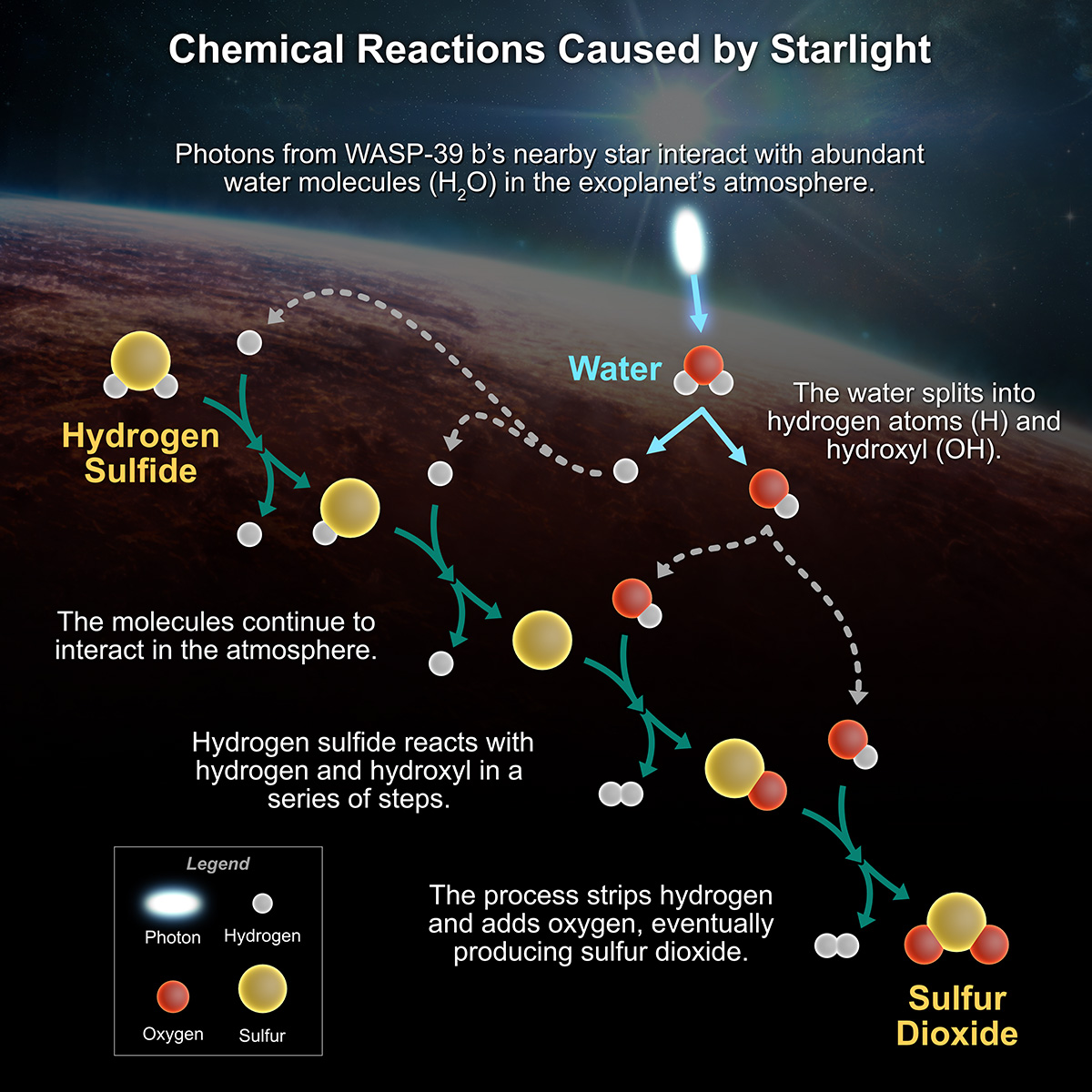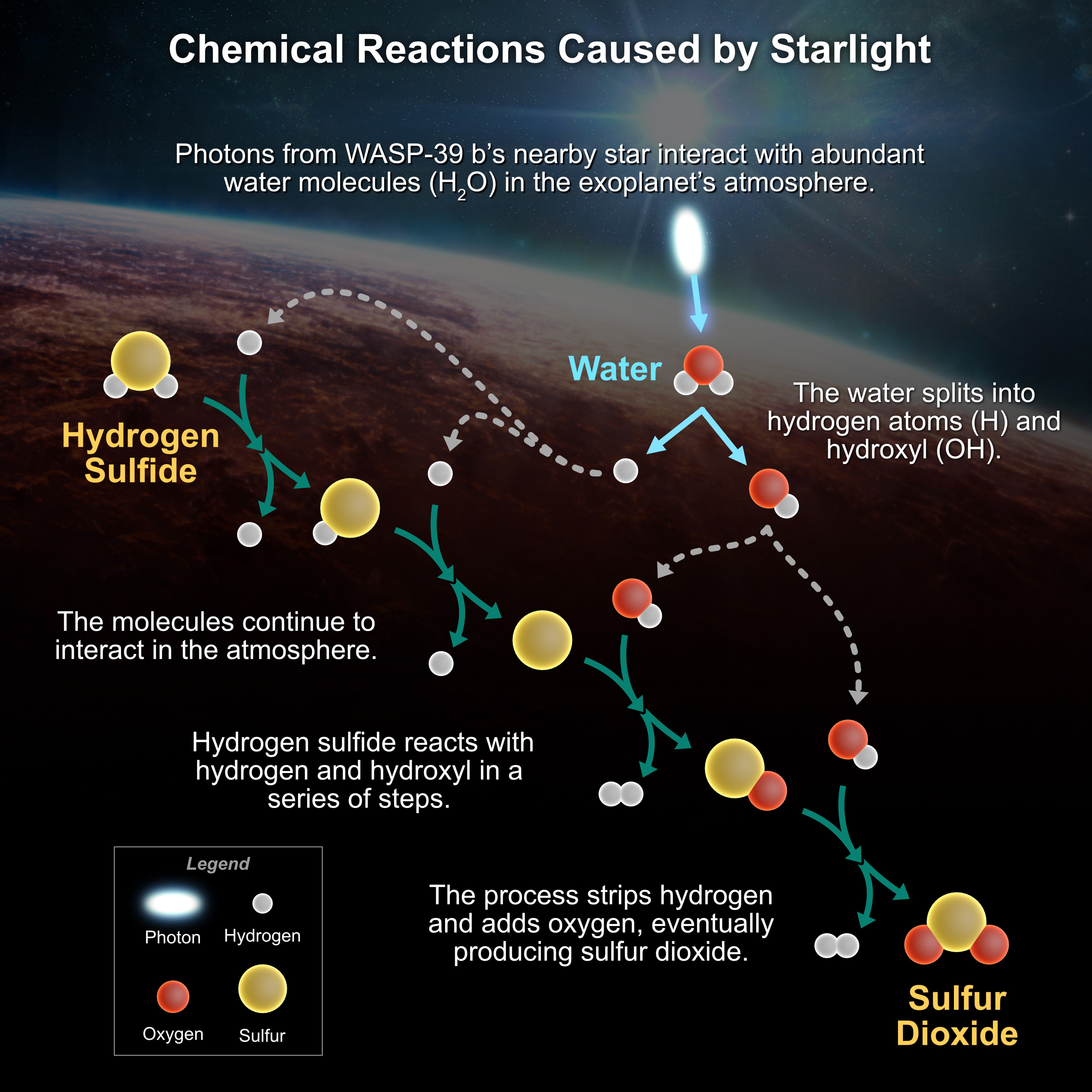Infographic: Chemical Reactions Caused by Starlight

| Credit | Credits: NASA/JPL-Caltech/Robert Hurt; Center for Astrophysics-Harvard & Smithsonian/Melissa Weiss |
|---|---|
| Language |
|
WASP-39 b is a planet unlike any in our solar system – a Saturn-sized behemoth that orbits its star closer than Mercury is to our Sun. This exoplanet was one of the first examined by NASA’s James Webb Space Telescope when it began regular science operations. The results have excited the exoplanet science community. Webb’s exquisitely sensitive instruments have provided a profile of WASP-39 b’s atmospheric constituents and identified a plethora of contents, including water, sulfur dioxide, carbon monoxide, sodium and potassium.
NASA’s James Webb Space Telescope made the first identification of sulfur dioxide in an exoplanet’s atmosphere. Its presence can only be explained by photochemistry – chemical reactions triggered by high-energy particles of starlight. Photochemistry is essential to processes on Earth key to life like photosynthesis and the generation of our ozone layer.
“This is the first time we see concrete evidence of photochemistry – chemical reactions initiated by energetic stellar light – on exoplanets,” said Shang-Min Tsai, a researcher at the University of Oxford in the United Kingdom and lead author of the paper explaining the origin of sulfur dioxide in WASP-39 b’s atmosphere. “I see this as a really promising outlook for advancing our understanding of exoplanet atmospheres with [this mission].”

